Anyone who feeds the birds in their garden is likely to have a Sparrowhawk passing through from time to time. I am no different from anyone else – feeling that moment of flinching fear as the small grey male or his larger female mate come swooping past my window with outstretched talons. Part of me wants the smaller birds they are hunting to get away, but another part knows that this is how the natural world works and I feel a thrill of excitement as these top predators streak through my garden. Working from home means that I am very fortunate to have an office with a desk close to a large window, with feeders for the garden birds just a short distance away outside, so I am able to keep a watchful eye on the comings and goings of the birds and take photos too. If one of our local pair of sparrowhawks, or another predator like a stoat or a weasel is around I immediately know. Alarm calls from the chaffinches in particular alert me to the possibility of a predator and often, as I quickly look up from my laptop I see a hawk streaking past with talons outstretched. Most strikes are failures and sometimes the bird will circle around to sit on the top of the nearby garden hedge, or even on the bird feeder pole! I have managed several lovely pictures of both a male and a female Sparrowhawk perched contentedly on top of my feeders which affords spectacular views of this beautiful bird. Feeding our garden birds is something many of us do and it is of great benefit to a large number of species, especially in helping them survive bad weather. But this artificial concentration of small birds inevitably makes your garden a brilliant hunting ground for the sparrowhawk so where you place your feeders in what is a rather artificial situation is important if you want to give the birds a chance to evade a hunter of any type. My feeders are close to a few dense shrubs and a hedge, so if weasel, stoat, a local cat or a sparrowhawk appear, the birds can quickly dive for cover.

Here in South Shropshire we have a range of plants in flower – some we would expect to see in the next few weeks such as the Snowdrops above, but others are flowering, even if just a little, well out of season. Comfrey, Dandelion, Hogweed and Geranium are all in flower around the garden and today I noticed Hawthorn in one of our hedges with new fresh green leaves. A variety of birds have also started a little exploratory singing, in particular the local Song Thrush which is a real pleasure to hear. Here the thrushes usually start singing sometime after the Winter Solstice has passed, but this winter they started well before that date. Elsewhere there are reports of some early birds nesting, but the South Shropshire Hills is a little too cold for that yet!

I spend quite a lot of time taking photographs of the wildlife I see around my garden and the plants that grow here. I am not a brilliant photographer, nor do I have a fantastic camera or take it terribly seriously, but I do love photographing what we see in the garden and my photographs also serve as a record of what visits us. I use my photographs to illustrate my books, magazine articles, websites and my talks so I certainly have an incentive to improve and over time my photographs have certainly got better! At first I was reluctant to use a camera – my husband is an excellent photographer and initially it was simply a question of handing the camera to him, pointing at something and saying ‘I’d like a picture of that please!’ Naturally he got pretty fed up with this and one day simply handed the camera back to me and said ‘you can do it’. My reluctance came from the fact that my father was a semi-professional photographer and his complicated equipment, combined with his skill, made me think that there was some mysterious alchemy to this art and I could never acquire it. But over time I have realised that taking a good photograph is simply about looking properly, and not necessarily going for the obvious shot unless it really is just for the record. My one asset when it comes to photography is that I have the patience of a saint. I have no artistic ability what-so-ever (and anyone who has ever seen me attempt to draw will confirm this) but a camera gives everyone the opportunity to be artistic, simply by using their eyes. There is only one other principle that I uphold and that is to take lots and lots of photographs. Sooner or later you will get something encouragingly good, maybe from an unusual angle (I like to photograph plants while lying flat on the ground) or perhaps of a bird like this Robin with an unfocused or interesting background. So if you are reluctant to try ‘nature photography’ I urge you to give it a go. At the very least, one in every hundred photos you take will be brilliant.

It is always very rewarding to see any mammals in my wildlife garden. Voles, shrews and mice are plentiful in the spring and summer, stoats and weasels are often seen in summer and autumn and the occasional rabbit finds its way through the rabbit proof fence (generally in the form of a very cute baby bunny) although I have no idea how they get in. The garden is fenced in this way as we grow lots of veggies and rabbits can be a real problem in a vegetable garden. In general other mammals can easily find their way through, or over, the fencing. Even the local badgers have come into the garden on the odd occasion to eat the spilled bird food. Over the last couple of years we have seen foxes very regularly, generally in late spring, when a vixen has scoured our wildflower meadows and other long grass areas for voles for her cubs. She dashes around the garden, leaping into the long grass and emerging with the unsuspecting and now dead voles which she then leaves in a pile before gathering them all up in her mouth and dashing off to her cubs hidden away somewhere close by. I do enjoy watching this activity (in spite of the voles’ untimely end) but there is something very frenetic about her activity – she is clearly desperate to find enough food for her family. So the recent relaxed Fox we have seen, just wandering around the garden in a very leisurely fashion, is rather a different experience. The male we have watched here lately is large, in good condition and seems quite at home. He too has been hunting for voles and rabbits, but seems to have time to wander or simply to sit and look about. The big wildlife pond was frozen over on his last visit and he confidently walked out onto the ice and appeared to be watching movement in the water below. A couple of days later two male foxes appeared in the field next to the garden, again wandering and relaxing and appearing to enjoy the winter sunshine! We are fortunate to have these handsome mammals around and hope they continue to visit us.

It is mild enough for small mammals – especially field and Bank Voles and wood mice – to be seen racing around the house looking for spilt bird food. Feeding the birds here is one way to keep these small mammals happy too, as they soon get used to where spilt food is available and take advantage of it. I also leave food for them on our windowsills for an up close and personal view.

Great tits and wood pigeons are making lots of noise and blue tits are already checking out several of the bird boxes around the garden. The fact is, increasing day length has already started to affect our plants and animals significantly, so even though temperatures are still low, icy winds are blowing up our valley and the ponds may have a thin layer of ice on them, the signs are there if I look hard for them. I am still expecting snow here at some point, but until that happens I am perfectly happy to delude myself into thinking that spring is just around the corner. In January it’s light until five in the evening. It was good this morning to hear a Dunnock singing his scratchy song and then to notice him sitting on the garden hedge – beak wide open – and other birds are singing too, especially the local great tits. But in spite of these glimpses of things to come temperatures are still dipping rapidly at night and our wren roost under the eaves at the back of the house has at least eight little feathery balls popping in at dusk. I spend half an hour each evening patiently watching and counting. Last winter the maximum number we counted going in was fifteen but the weather was a good deal colder than it is now. Recent work on the outside of our house meant that this area, where the roost takes place through the colder months, needed to be left exactly as it was – creating a safe winter haven for one of my favourite birds was far more important that a small draft coming into the house in my opinion! So although numbers are down so far this winter there is still plenty of time for temperatures to drop enough to create a new ‘wren record’ for the garden.

This is a time of year when my senses get a bit confused – I know that there are probably at least two more months of winter to endure, but in my heart I feel it’s spring. Getting up at six this morning – it’s easy to think that it’s nearer March than Christmas – there was a definite feeling of activity outside as the sun rose over the hill to the east of our garden. It wasn’t long before a mistle thrush began to sing from a tree at the top of the hill, and by 7.30 a song thrush was singing heartily from the wood next door. Other birds were joining in just a little – great tits were calling, nuthatches making a lot of noise and the odd dunnock was contributing with a short twitter of song from the top of our hedge. Yesterday I watched a blue tit thoroughly investigating one of our nest boxes, going in and out, and sitting on a twig outside, looking carefully around to make sure this was a good place to bring up a family. I also noticed a flurry of movement in the pond in the field next door (an early frog??) and our snowdrops are in bud. It is easy to be lulled into a false sense of winter ending, but when we all look forward to spring so much, it is easy to be optimistic now. It is also easy to feel that it is time to start gardening, but however twitchy I feel about getting outside and tidying up I curb my enthusiasm. Any gardening now could easily expose hibernating creatures from hedgehogs to ladybirds when the temperatures drop again as they inevitably will. Cutting back the standing vegetation in the borders will also deprive me of the sight of Frosty Borders – or even snow – decking the garden with a sparkle when temperatures plummet again. But in spite of my reservations, all this activity helps increase anticipation – spring is not far away and the wonderful yearly wildlife cycle starts again in the garden.

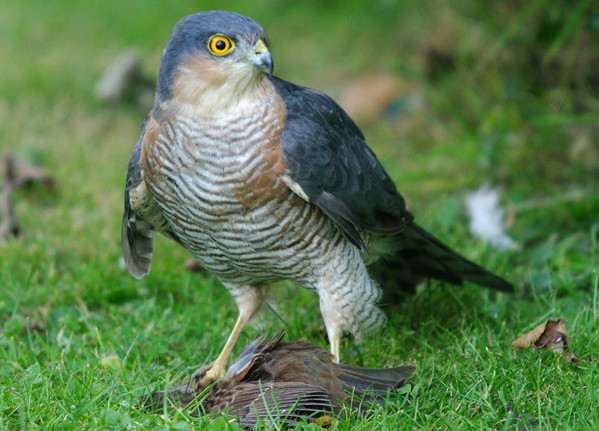
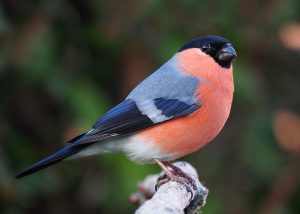
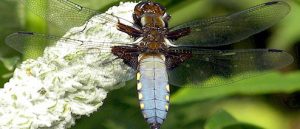
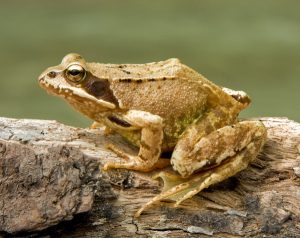
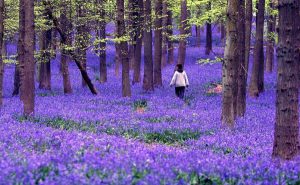
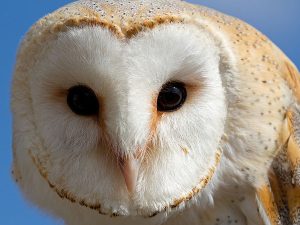
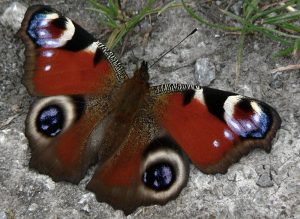
1 Comment
Delightful piece. I feel more alive for the sharing of it.